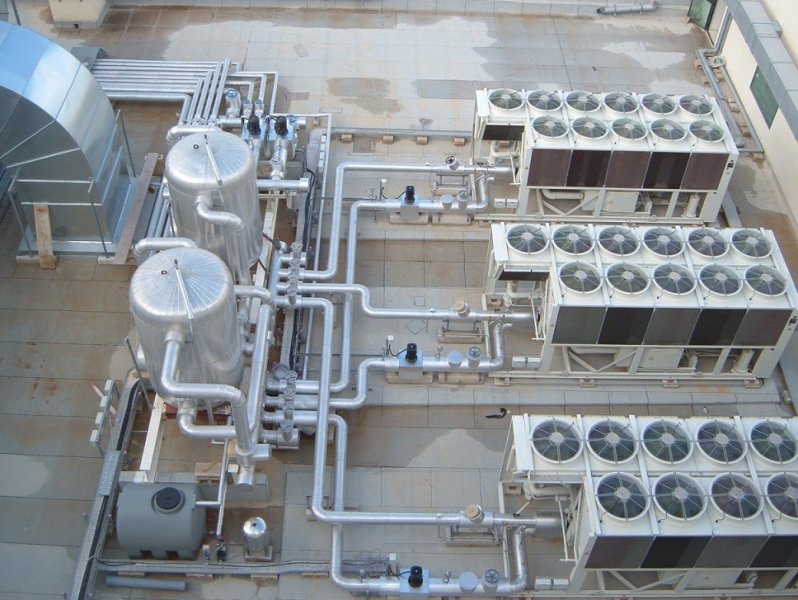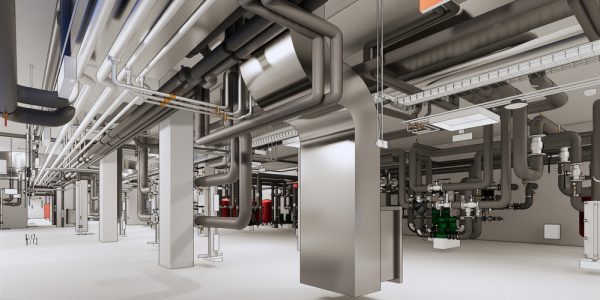Enclosed parking garage structures are specifically designed for the storage of automobiles, especially in dense urban settings. More notably, these

HVAC translates to Heating, Ventilation, and Air Conditioning, these four form the fundamentals of HVAC system design.
With regards to mechanical structure benefits, the interior climate alludes to the system utilized to hotness, cool, and disseminate air around a structure.
Even though Heating Ventilating and Air Conditioning gear (HVAC) is the normal wording, Indoor Environmental Control Systems (IECS) is logical, more precise, and more comprehensive of every one of the elements of cooling.
Fundamentals of HVAC System Design
The term solace cooling incorporates all the molding processes applied to encompassing air to acquire an indoor climate for HVAC system design that is agreeable as far as temperature, relative moistness, indoor air quality, and air dispersion.
● Temperature: The temperature conditions acknowledged as agreeable are 68°F to 75°F with 75±2°F as plan objective.
● Humidity: The moistness conditions acknowledged as agreeable are 20 % to 60 % relative mugginess with 55 ± 5 % as plan objective.
● Indoor Air Quality: Outside natural air prerequisite is around 15 to 20 cubic feet each moment (Cfm) per individual.
● Air Movement and Distribution: The HVAC framework should move air to each alcove and corner of the structure to give uniform natural conditions, forestall shocking drafts, and breaking point commotion decibel levels to 30 to 40 NC.

HVAC Mechanical Systems
The most well-known dynamic cooling approach is the utilization of the “fume pressure refrigeration cycle”, which includes stage change of a liquid (called refrigerant) from a fluid to gas. Packing the liquid at a high-pressure discharges heat, and when it is at a low strain, it ingests heat ergo it impacts the HVAC system design.
Cooling “load,” is typically communicated in refrigerant tons (RT) or tons. A ton is a proportion of the refrigeration limit.
One ton of cooling limit is comparable to the hotness extraction pace of 3.5 kW or 12,000 Btu’s (British warm units) each hour. A Btu/h, or British warm unit each hour, is a unit used to gauge the hotness yield of a warming framework. One kWh of hotness = 3414 Btu/h.
What are Different Types of HVAC Systems?
There is the dumbfounding scope of building cooling frameworks in the market today going from a little or medium limit independent unit to focal water chillers/boilers. While these HVAC system designs share normal fundamental components, they contrast in actual appearance and course of action, value, execution, and in way of control and activity.
A few drivers in choice are simply the plan of the structure – stature, the permeability of gear, and nearness to encompassing structures – while other factors involve the proprietor’s inclination – starting capital expenses, feel, and long-haul life cycle costs.
#1 Window Air Conditioners
Window-mounted AC units address the biggest class of versatile AC machines. The standard limit range is 0.5 tons to 2 tons that can sufficiently cool 100 – 600 square feet. The plan is
a DX (direct extension) fume pressure cycle and the hotness dismissal is using an air-cooled condenser. The presence of window units both inside and remotely isn’t definitive in style or class. Crown jewels outer façade and regularly experience the ill effects of water dribbling. See the figure beneath.
#2 Split Air Conditioners
Single split units are the most reasonable sort of standard cooling framework, appropriate for a solitary room (ductless) application. A split unit has two parts: an open-air metal bureau and an indoor bureau. That is the reason it is known as a “split” HVAC system design.
The open-air bureau contains the condenser and blower and ordinarily sits on a substantial chunk outside your structure. The indoor bureau contains the evaporator and is typically situated on the divider, in the loft, or in a wardrobe. The indoor bureau additionally commonly incorporates a heater (or within some portion of a hotness siphon). The indoor and outside units are associated with a refrigerant line.
The plan is a DX (direct extension) fume pressure cycle, and the hotness dismissal is using an air-cooled condenser.

HVAC Distribution Systems
This market area incorporates cooling frameworks for medium-reach private and business structures with unit limits fluctuating from 3 to 50 tons. In the appropriate course of action, with numerous units, the combined limit can total to any number. Nonetheless, past a 200-ton limit, one should play out the existence cycle examination to look at the advantages of a brought-together chiller framework. The area incorporates:
● Large multi-split cooling
● Variable refrigerant stream (VRF) frameworks
● Ducted bundled units
● Rooftop units
● Heat siphon units
These cooling frameworks use an immediate extension (DX) evaporator to cool air and an air-cooled condenser to dismiss heat. This area prohibits little independent windows and single split cooling.
Multi-Split System Air Conditioning
Multi-split units are just a bigger variant of a little split consisting of a few indoor units (up to around 10) associated with a solitary open-air unit.
The multi-split units are preferred if you would rather not introduce ventilation work and assume you need fewer open-air units because of the absence of outside space or, more than likely, need to safeguard your structure’s outer appearance. They are most oftentimes utilized in places like eateries, workplaces, specialist medical procedures, and shops.
About Author
InnoDez